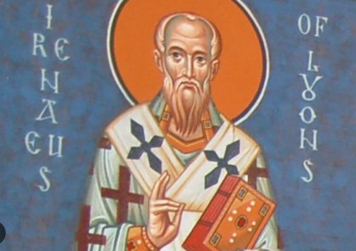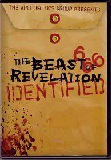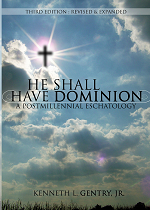TERRY ON REVELATION’S DATE (2)
PMW 2024-008 by Milton S. Terry
[Gentry note: This is part 2 of Milton S. Terry’s two-part argument for the early date of Revelation]
Jewish persecution
A fair weighing of the arguments thus far adduced shows that they all, excepting the statement of Irenæus, favor the early rather than the later date. The facts appealed to indicate the times before rather than after the destruction of Jerusalem. And this opinion is corroborated by the further consideration that the persecutions of the time proceed from the Jews (Rev. 2:9; 3:9). We know that the persecutions of the apostolic age came chiefly through Jewish instigation and even at the time of Polycarp, we read in Eusebius (Eccl. Hist. 4:15) that the Christian martyr’s death was secured by the fierce zeal of the Jewish population.
Standing temple
The mention, in Revelation 11:1–3, of the temple, the altar, and the court and the mystical designation, in verse 8, of “the great city, which spiritually is called Sodom and Egypt, where also their Lord was crucified,” implies that the city and temple of Jerusalem were not yet overthrown. It is singularly futile to plead that these expressions are symbolical. For, whatever the mystical significance, the whole manner of statement supposes such a knowledge of the temple and the altar as would be unnatural and out of place if in fact the city and temple were then in ruins. But, on the other hand, if these were yet existing and the time of their utter demolition was near at hand, the allusions would be most natural and impressive.
Events proximity
The early date is further supported by the emphatic statement, placed in the very title of the book and repeated in various forms again and again: that the revelation was of “things which must shortly come to pass,” and the time of which was near at hand (Rev. 1:1, 3; 22:6, 7, 10, 12, 20). If we adopt the early date and the terrible catastrophe of the Apocalypse is understood of the ruin of that great city where the Lord was crucified and on which the Lord himself charged the guilt of all the righteous blood of martyrs from Abel unto Zachariah (Matt. 23:34–37), this prophecy has great force and significance in claiming to foretell things of the near future. The statements are thus seen to be true and appropriate. But it is impossible, without subjecting the language to the most unnatural treatment, to explain these time-allusions as referring to events that were not to take place until centuries after the book was written.
The Book of Revelation Made Easy
(by Ken Gentry)
Helpful introduction to Revelation presenting keys for interpreting. Also provides studies of basic issues in Revelation’s story-line.|
See more study materials at: www.KennethGentry.com
666 cryptogram
Another proof of the early date is found in the mystical number 666 in 13:18. This can be legitimately explained as the number of the name NERO CÆSAR, when written in Hebrew characters (see the exposition in loco). This receives additional confirmation in the fact that the book assumes to belong to the period of the sixth king as mentioned in 17:10, ὁ εις ἔστιν (ho eis estin), “the one that now is.” If we follow the most natural method of reckoning the Cæsars and the one which appears in Suetonius and the Sibylline Oracles, we have (1) Julius, (2) Augustus, (3) Tiberius, (4) Caligula, (5) Claudius, (6) Nero. The reign of Nero extended from A.D. 54–68 and somewhere between these dates we may most properly assign the composition of this Apocalypse.
Hebraic langauge
One of the most decisive arguments for the early date is based on the Hebraistic language and style of the author and has been already mentioned in connection with the question of authorship. If the fourth gospel and the Apocalypse are from one writer, the remarkable differences are most naturally explained by supposing the Apocalypse to have been composed many years prior to the gospel. To suppose the contrary is in defiance of all critical observation and experience.
New Testament allusions
There are, finally, several allusions to the Apocalypse in other New Testament writings, which indicate that it must have been one of the earliest written productions of the apostolic times. The contrast of “the Jerusalem that now is and is in bondage with her children,” with “the Jerusalem that is above, which is our mother” (Gal. 4:25, 26), sums up in a few words a large portion of the Apocalypse. This may be most easily explained as an allusion to John’s well-known visions of the new and heavenly Jerusalem. But it is difficult to suppose that the apocalyptic symbolism was drawn from Paul’s brief allegory.
A still more notable allusion appears in Hebrews 12:22–24, which mentions “Mount Zion, the city of the living God, the heavenly Jerusalem, innumerable hosts of angels, the general assembly and church of the firstborn enrolled in heaven and the spirits of just men made perfect.” This points to a number of the most familiar pictures of John’s Apocalypse. To assume that John borrowed this from the Epistle to the Hebrews would involve a most violent literary judgment. Were it a mere question of citation, or the appropriation of a symbol or of a figure, we might readily believe that the apocalyptic writer borrowed from a New Testament source, as he frequently does from the Old Testament. But in this case it would be making John take the warp and woof of his whole book out of the half dozen expressions found in a single passage of the Epistle to the Hebrews.
[image error]For more information and to order click here.
" data-image-caption="" data-medium-file="https://postmillennialismtoday.files...." data-large-file="https://postmillennialismtoday.files...." class="alignright size-full wp-image-209" src="https://postmillennialismtoday.files...." alt="Navigating the Book of Revelation: Special Studies on Important Issues" />Navigating the Book of Revelation (by Ken Gentry)
Technical studies on key issues in Revelation, including the seven-sealed scroll, the cast out temple, Jewish persecution of Christianity, the Babylonian Harlot, and more.
See more study materials at: www.KennethGentry.com
Now, there is no contention that Galatians and Hebrews were written before the destruction of Jerusalem. And to say the least, the most natural explanation of the allusions referred to is to suppose that the Apocalypse was already written and that Paul and many others of his day were familiar with its contents. Writers who cite passages from the apostolic fathers to prove the priority of the gospel of John are the last persons in the world who should presume to dispute the obvious priority of the Apocalypse of John to Galatians and Hebrews. For in no case are the alleged quotations of the Gospel more notable or striking than these allusions to the Apocalypse in the New Testament epistles.
Click on the following images for more information on these studies:



Kenneth L. Gentry Jr.'s Blog
- Kenneth L. Gentry Jr.'s profile
- 85 followers



